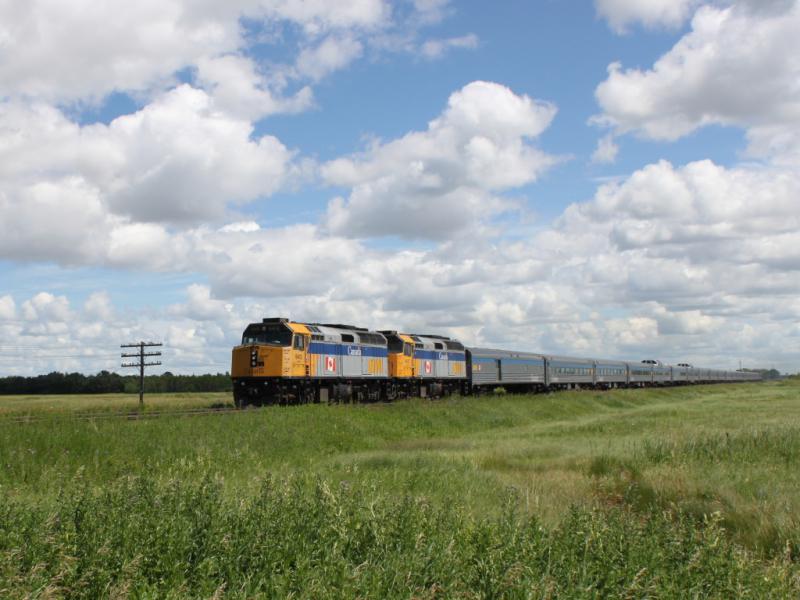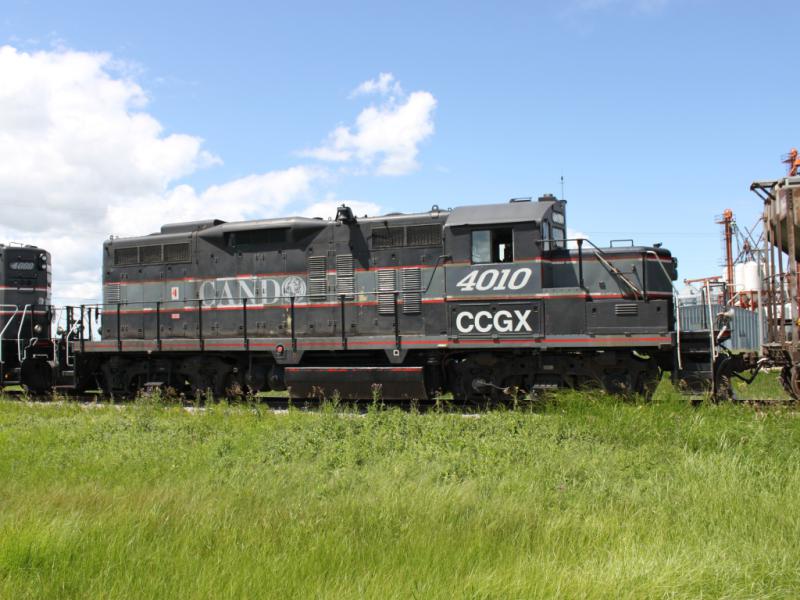I was interviewed by Brent Mazerolle, staff reporter for the
Moncton Times and Transcript, for a front page article on the VIA Rail cuts. Brent and I had a good chat and he produced a nice article that does a good job at digging deeper than the bare facts. The Times and Transcript has a paywall so I can't link to the article, but Brent gave me permission to post the article here in its entirety. I added some links but otherwise did not alter the content. I have one note at the bottom about a misquote.
Via Rail service has seen ups, downs
Cuts to Maritime passenger service are latest in long line of reductions
By Brent Mazerolle, Times and Transcript Staff
There is perhaps no greater symbol of Canadian railroading’s long history than The Ocean, the Via Rail passenger train that runs from Halifax to Montréal and back, passing through eastern New Brunswick along the way.
The Ocean is the oldest continuously operated passenger train in North America, serving eastern Canada for 108 years as of this week.
As most have heard, though, the once mighty Ocean is about to be reduced to a trickle.
Come October, Via Rail is cutting service between Halifax and Montreal from six round trips a week to three, as the government-owned passenger rail service reduces trips across the country.
If rail passenger service in the Maritimes has suffered the proverbial “death from a thousand cuts” in the past half-century or so, the Ocean announcement is the 999th.
Except for
the newly started New Brunswick Southern Railway and Ambassatours Gray Line tourist train that shows cruise ship passengers around Saint John, the Ocean is the last passenger train in all of Atlantic Canada.
At least 45 employees will lose their jobs in the Maritimes — 30 in Halifax and 15 in Moncton — because of cuts to The Ocean service and also because of a move to e-tickets.
At one time, such cuts to rail service and job losses would have spurred a vocal public outcry in the Maritimes and especially in a once proud railroad community like Moncton, where the train station was once a hub of activity.
It also would normally spur protests on New Brunswick’s north shore, where the train’s importance is more pressing because of a lack of air travel, divided highways, and widespread bus service.
But instead, the cuts have been met largely with silence, except from a handful of railway enthusiasts.
As passionate and knowledgeable as any of them and more articulate than many is Winnipeg resident Steve Boyko.
A former New Brunswicker, he is also particularly in tune with the history of passenger rail in this region.
His website
traingeek.ca and his frequently updated blog
Confessions of a Train Geek are exceptional resources for anyone interested in Canadian railroading, past and present.
Boyko sees the muted reaction as a result in part of the way Via took the news and “spun it pretty hard.” Indeed, the title of the corporation’s
press release announcing the cuts was titled, “VIA Rail continues its modernization and takes action to better meet customer demand.”
However, “it all depends on local support,” he says.
Contrast the reaction here to the reaction of people on the Gaspé peninsula to relatively minor changes to their rail service in 2009.
Boyko’s
posting on traingeek.ca at the time captured some of the passion folks in Gaspé have for their train:
“(P)rotestors blocked the railway track at Barachois, Quebec and delayed VIA 16, the Chaleur. They were protesting several things: the removal of the on-board cook, VIA’s refusal to add extra cars for the holidays, and the removal of the Chaleur name from the train. They put tables and chairs on the track, then had lunch. The track was blocked from 11:40 to 13:15.”
Boyko said the protest had broad community support.
“The protest was organized by Rural Dignity of Canada, a grassroots organization that fights for smaller communities’ rights. The federal MP, provincial MNA, and the mayors of Gaspé and Percé were present, as well as the Roman Catholic Bishop of Gaspé and the Anglican Bishop of Quebec City.”
The protests worked.
If there hasn’t been that kind of passion here, it’s probably because many of us just aren’t riding the rails any more.
According to a Via spokesman, a majority of customers who use the train line are not dependent on it.
“For a lot of the customers that use the Ocean train, the main driver for them taking the train isn’t necessarily because they have to get from here to there. A lot of people are taking the train as an experience,” said Malcolm Andrews, senior advisor for the company’s community relations.
Total ridership along the Ocean train line has dropped by about half over the past 15 years because of the twinning of the Trans-Canada Highway and the number of new airlines that operate in the region, Andrews said.
Another sharp contrast is just how much rail travel has been cut in this region in just the past 22 years.
You don’t have to look to some distant past, to the days when trains were hourly and Moncton was such a rail centre linking us to the rest of the world that having Winston Churchill stretching his legs on the platform of the Moncton station at the height of the Second World War barely received a mention in the papers of the day.
You only have to look back to the 1980s to see both The Ocean and The Atlantic running between Halifax and Montréal with their paths diverging at Moncton.
There were also day-liners running from various parts of New Brunswick and Nova Scotia and so passengers could make connections to the two big trains at Moncton and Truro.
Most days, if you missed a train in and around Moncton, you could catch another later in the day.
And though passenger service to Prince Edward Island was long gone, you could still ship freight to P.E.I. by train on a spur that left the main line at Sackville.
“The biggest cuts Via ever had was Jan. 15, 1990,” says Boyko of the day all those day-liners were cut and when the company tried to cut The Atlantic (protests in Saint John led by then-mayor Elsie Wayne reversed the decision, though the service died for good four years later).
Before that, though, the rail lines were still busy.
“On April 30, 1989, there were 29 arrivals and 28 departures at the Halifax train station,” says Boyko, citing some figures he happened to be able to retrieve quickly.
A major factor in all of this is that the federal government has been cutting some of the hundreds of millions of dollars it gives to Via every year.
Former federal transportation minister Chuck Strahl, able to speak more candidly since he retired from politics in 2011, offered this food for thought
recently to the Globe and Mail.
Saying Via Rail is still very popular with those who use it in the Montreal-Ottawa-Toronto corridor, where the railway gets about 85 per cent of its business, he nevertheless questioned taxpayer subsidies even for that.
“The well-to-do business traveller is being heavily subsidized by the waitress working two shifts at McDonald’s because somebody has to subsidize it to make it work,” he said.
“But at least it’s being used, and I think that’s the rationale why it doesn’t get hatcheted.”
He had even less sympathy for keeping Via going generally.
“Train travel in Canada has this romantic notion that if we all just rode the rails, all of our problems will just disappear,” he said.
On the other hand, NDP transport critic Olivia Chow responded by saying Canada is out of step with other G20 nations, which are investing heavily in high-speed rail while Ottawa cuts spending to Via Rail.
Steve here. In general I was well quoted, but the number of arrivals and departures quoted for 1989 were for the entire week, not for a single day. Tom Box deserves credit for the figures.





